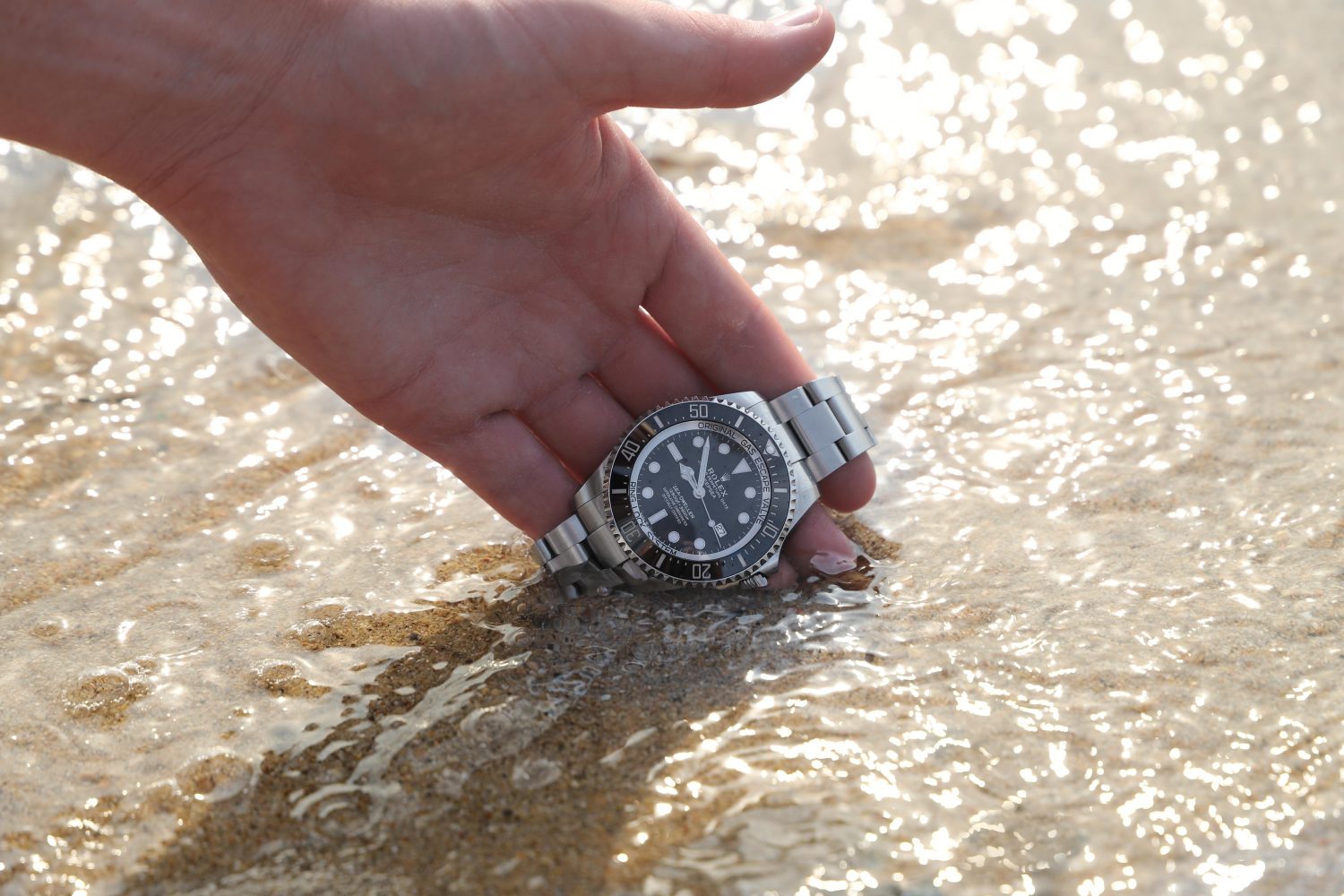
Why are Dive Watches so Popular? What is a Dive Watch? [Complete Guide]
Dive watches, also known as diver’s watches or diving watches, are one of the most popular types of watches on the market. Almost every single watch brand has a dive watch in their collection and oftentimes, it is one of their most popular models. Moreover, if we look at some of the most iconic and recognized watches in the world, many of them are dive watches. Just to take a few examples, we have Rolex with its Submariner, TAG Heuer with its Aquaracer, Omega with its Seamaster, Tudor with its Black Bay, Tissot with its Seastar, and many, many more.
The fact of the matter is that when a lot of people look for a watch to buy, chances are that a dive watch is at least part of their consideration list. So why is it that dive watches, watches made for diving have become so immensely popular and iconic? Why have they established themselves as a go-to and obvious choice for a lot of people when most people who buy a dive watch are not professional divers, nor will likely not dive deeper than one meter when they are at the beach?
What is a dive watch?
First things first, we need to sort out what a dive watch is before we get into the details.
And the fact of the matter is that the term is very broad and can have different meanings depending on how strict you are with the definition.
From the strictest definition, a dive watch, or a professional dive watch, is a watch intended for professional diving. As such, it needs to meet a set of strict criteria. A true dive watch is in accordance with the ISO 6425 standard which defines strict test standards and characteristics for watches that are suitable for diving with an oxygen tube. If they meet the ISO 6425 standard, they may be marked with the word ”diver’s” or ”diver”. A watch that does not meet these criteria is not allowed to call itself a true dive watch. With that said, even if a watch meets the criteria of the ISO 6425 standard, they are not obligated to use the term ”diver” on the dial.

It wasn’t until 1996 that an official standard for what constitutes a true dive watch was established. Prior to this, manufacturers could simply label their watch as a dive watch even though they were not suitable for more than a little swim in a pool. Seeing a need for a standardized set of requirements, the International organization for Standardization, ISO, created and defined requirements for dive watches.
To make sure dive watches meet the ISO standard, a series of standardized tests are carried out. Note that ISO does not perform any tests themselves but rather only establishes the requirements. The testing is left to each individual manufacturer.
The criteria for a professional diving watch include:
Water resistance
Water resistance of at least 100m/330 feet and it must have been pressure-tested 25% beyond its specified water resistance. Most people, however, consider a water resistance of at least 200m/660 feet as the bare minimum as 100m is today regarded as suitable for recreational snorkeling and not diving. The water-resistance requirements are not only related to the depth rating but also the reliability of the water resistance.
The tests involved to reassure this is that the watch immersed to a depth of 30cm for 50 hours and then evaluated. Note that these are the minimum requirements and some watch brands go above and beyond in testing the performance of their watches. Furthermore, the watch is immersed in water with 125% of the rated pressure with a force of 5 N perpendicular to the crown and pusher buttons if there are any. This is to ensure that the crown – which is generally the weakest point of a dive watch, is safe and reliable.
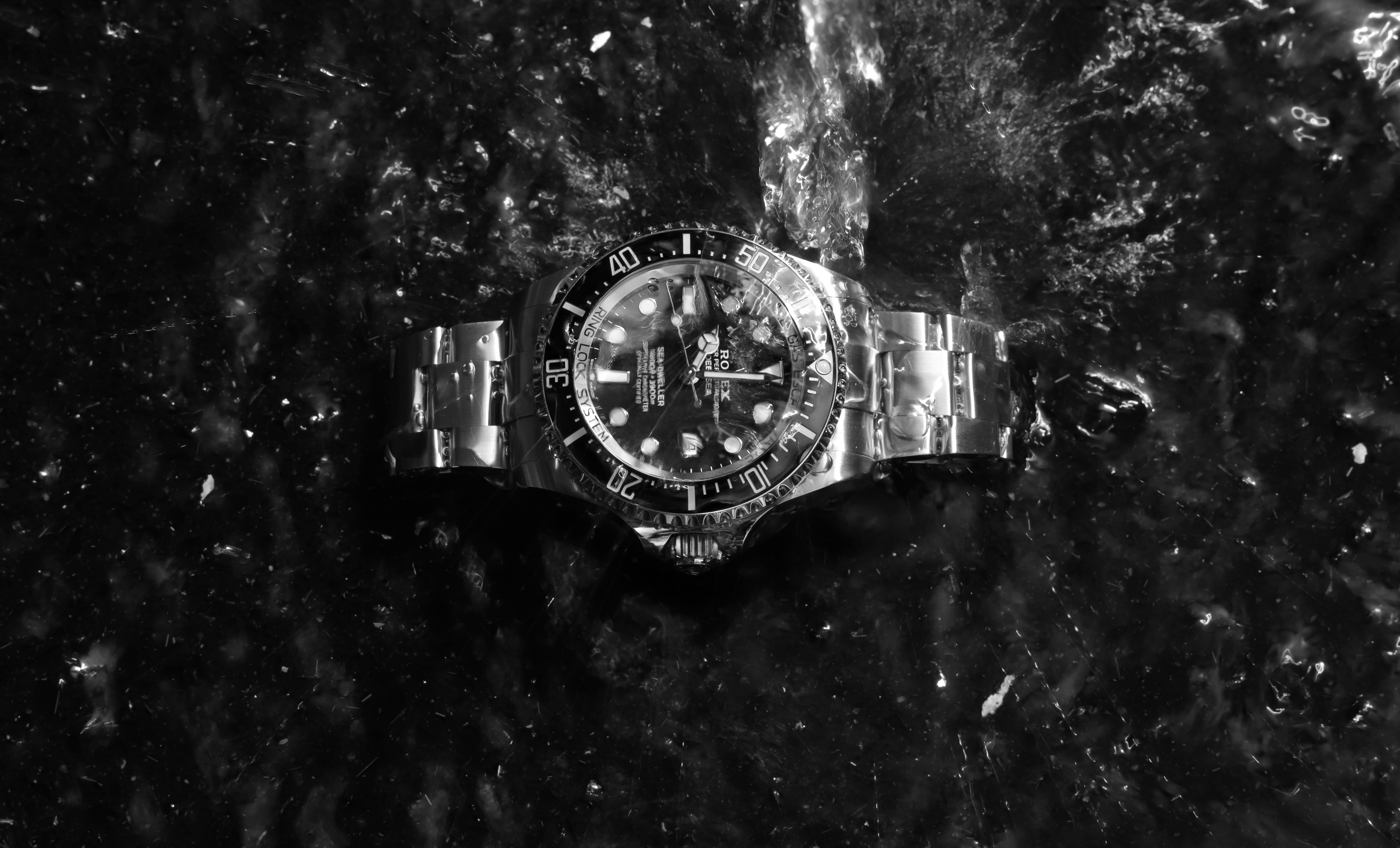
The purpose of testing all watches at 125% of their specified depth rating is to provide a safety margin for water density, degradation of the seals, and dynamic pressure increase events.
Moreover, the watch is immersed in 30cm of water at temperatures 40 °C, 5 °C, and then 40 °C again. This is done for 5 minutes at each temperature. The transition between the temperatures may not exceed 1 minute and the watch must not show any signs of water intrusion or condensation. This is to reflect the possible real-life scenarios of a dive watch.
Last but not least a dive watch is immersed in a pressure vessel and subject to 125% of the rated pressure for 2 hours. Th requirement is that the pressure is applied within 1 minute after submersion and the overpressure should be reduced to 0.3 bar within 1 minute and then retained at this pressure for 1 hour. As previously, there must be no signs of water intrusion or condensation.
Both before and after each of these tests, the watch is carefully inspected for moisture or any potential water penetration. This is done by placing the watch on a plate and then heating it up to between 40 and 45°C. A drop of water that is tempered between 17 and 25°C is then dropped onto the crystal. After 60 seconds, the water is removed and the watch is inspected to see if it has any condensation on the inside of the crystal. If it has, the water resistance has been compromised and the watch has not met the ISO standard.
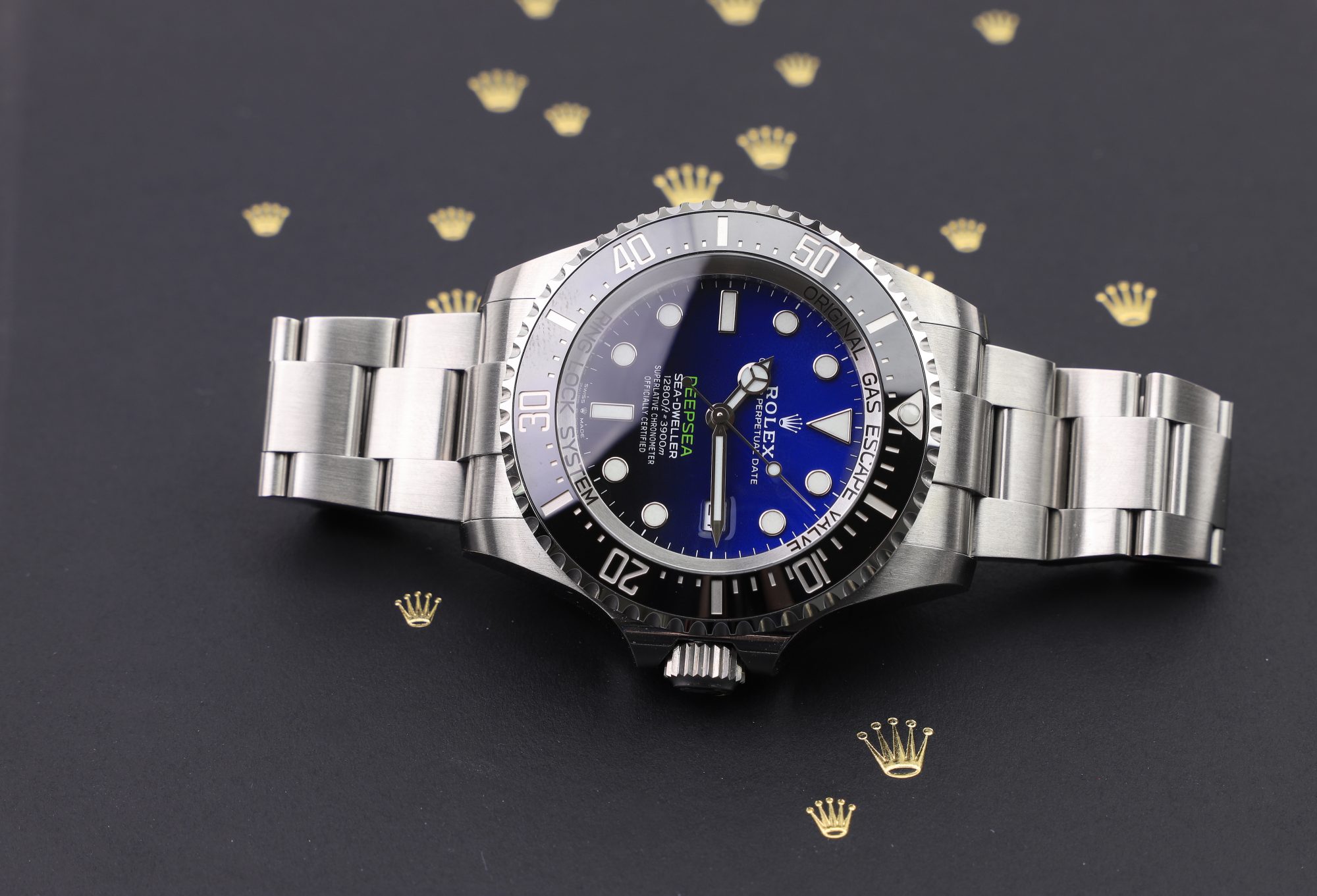
Case material
The second criteria of ISO 6425 is that the case of the watch is manufactured with a material that is able to withstand the corrosive effect of seawater. If the bracelet is made of metal, it must meet the same requirement. For dive watches, this usually means 316L stainless steel but manufacturers may use any material that meets these criteria. To reassure that cases meet these criteria, they are put in a sodium chloride solution of 30 grams per liter for 24 hours, at a temperature of between 18 and 25°C. They are then evaluated for pitting, corrosion, and oxidation. This test is meant to simulate the saltwater in the sea – which is the environment the watch is meant to be worn in.
Rotating bezel
Equipped with a unidirectional rotating bezel that allows the wearer to measure elapsed time underwater. This is a way for the diver to keep track of how long they have been underwater and avoid the risk of running out of oxygen whilst they are below the surface. Moreover, if a diver underestimates the time they have spent underwater, it could also lead to decompression sickness, also known as ”the bends”. Note that whilst the rotating bezel is the most common method to measure elapsed time in a dive watch – and a distinct and iconic design characteristic of a dive watch, it’s not a requirement.
A dive watch simply needs to have any form of measuring the time, whether that is digital or mechanical. The watch must be able to measure elapsed time up to one hour. If a dive watch is equipped with a rotating bezel, it needs to be unidirectional, meaning, it only rotates in one direction. This is a safety feature that prevents the diver from accidentally knocking the bezel, rotating it, and mistakingly believing that they have been underwater for a shorter time than they actually have. Moreover, unidirectional rotating bezels are required to have markings at least every five minutes.
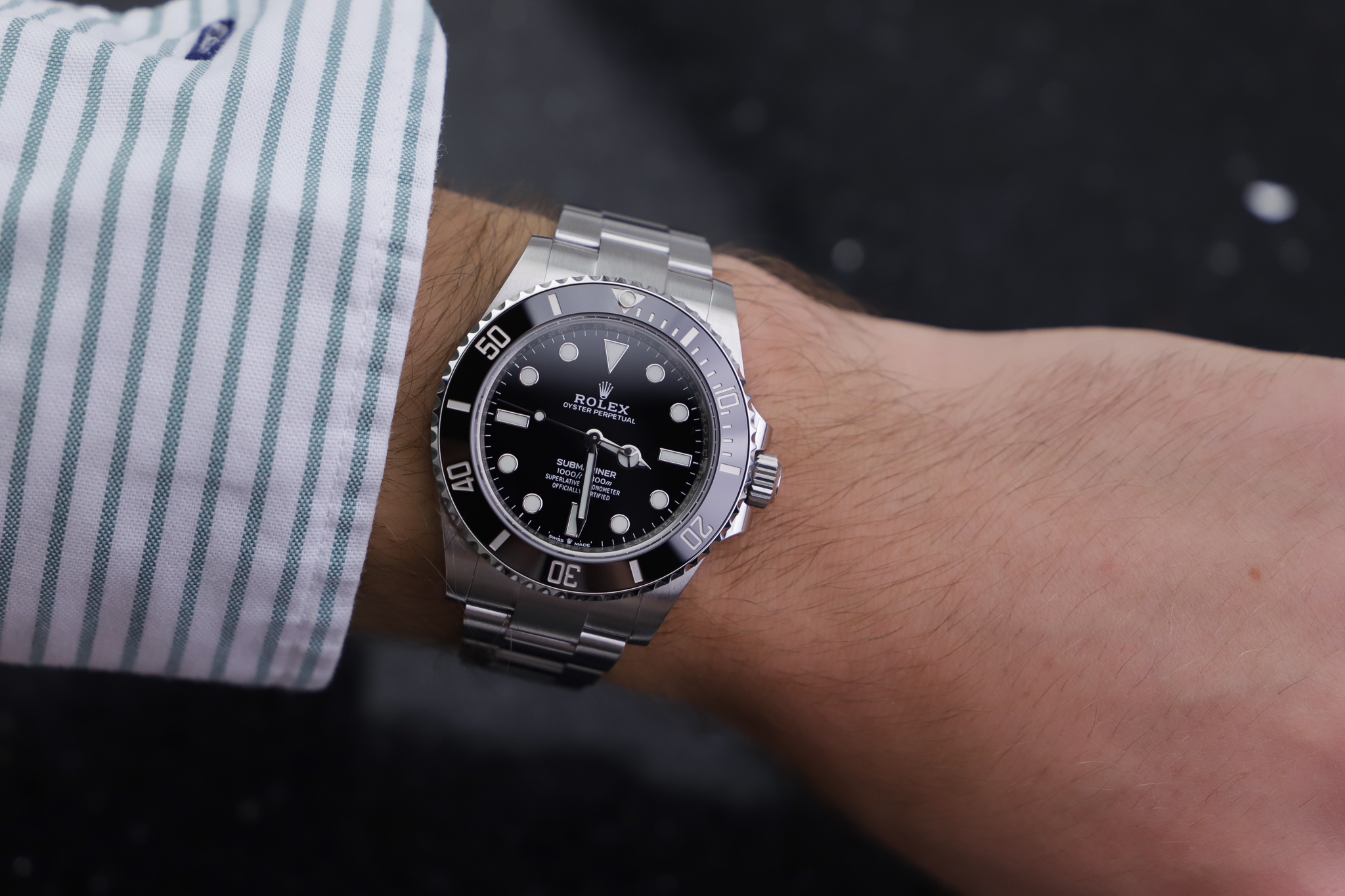
Legibility
To allow for quick and easy reading, even in murky waters, a dive watch needs to offer excellent legibility underwater. They often have large hands and hour markers filled with strongly glowing luminescent material. Specifically, dive watches need to offer legibility from 25cm in total darkness according to the ISO 6425 standard. As such, good luminescence is a prerequisite for a dive watch.
Durable strap
Dive watches are normally equipped with durable and water-resistant straps which are suitable for the intended purpose of the watch. Dive watches generally either have metal bracelets or an appropriate water-resistant strap such as rubber.
Shock-resistance
Professional diving means subjecting the watch to harsh environments and as such, a dive watch needs to be robust and durable. For this reason, tests that relate to the watch’s shock-resistant properties are also carried out. The test involves subjecting the watch to around 5,000 gs of force. The blow is done once directly to the face of the watch and then once more to the left side of the watch case. The watch must retain an accuracy within +/- 60 seconds a day after this.
Mixed gas watch testing
Further tests are carried out for mixed-gas diving. To test this, the watch is subject to 125% of the rated pressure in a helium-enriched breathing gas mix inside a pressure vessel for 15 days. The overpressure is then reduced to normal pressure within 3 minutes. The watch must not show any signs of water penetration or condensation.
Last optional test
Lastly, there is an optional test that is used for ISO 2281. This is not required for obtaining ISO 6425 approval for a dive watch, but something that some manufacturers still use to prove the durability and reliability of their timepieces. The test involves subjecting the watch to an overpressure of 2 bar with no more than 50 µg/min of air allowed to get inside the case.
As a side note, all tests should be conducted at a temperature of between 18 °C and 25 °C temperature.
Helium escape valve/ helium release valve
The helium escape valve, sometimes referred to as the helium release valve is a feature that is found in some dive watches, primarily those that are intended for saturation diving at great depths. Helium escape valves are not a requirement for a dive watch but they are crucial for deep-dive watches that have a high depth rating.
The purpose of the helium escape valve is to prevent high internal pressure which may lead to the crystal blowing off. When deep diving, internal pressure builds up inside the case which is caused by helium that has come into the watch case. Since helium atoms are the smallest natural gas particles found in nature, all watches naturally have this inside of them. These do not possess any issues for regular use or diving but when the watch is subject to extreme pressure and then goes through decompression, such as that from deep diving, it can cause issues. The helium escape valve serves to release the internal pressure that has built up and prevent the glass from blowing.

Not all dive watches are true dive watches
In general, the term ”dive watch” is thrown around quite a lot in the watch world. But as you can see based on the ISO criteria above, a watch needs to meet strict criteria in order to call itself a dive watch.
With that said, there are plenty of watches that have dive-watch designs but are not true dive watches in the sense that they do not meet the ISO certifications or perhaps are not intended for diving at all.
With the huge popularity of dive watches, there’s a large selection of dive watches on the market, from entry-level watches to ultra-advanced dive watches like the Rolex 126067 titanium with a water resistance of 11,000 meters (36,090 feet).
When most people talk about dive watches, they often just talk about watches that have the design of dive watches. In general, dive watches have a very distinct design with things like a rotating unidirectional bezel, large hands and hour markers, and a sporty case. So even if a watch doesn’t meet the performance criteria, it may still be designed like a true dive watch.
So from here on, we’ll use the broad term for dive watches, meaning any watch with a dive-watch-inspired design, regardless of whether they meet the ISO-certification requirements or not.
The fact of the matter is that most people who buy dive watches do not buy them with the purpose of going diving with them. In fact, there are far more advanced digital dive watch tools that professionals use today that can provide much more detailed information than a traditional wristwatch can.
Yet still, it can be nice to have the reassurance that your watch is robust, durable, and able to withstand water in case you’re planning to go swimming or snorkeling. But let’s be realistic, you probably don’t need a water resistance with a water resistance of 500 meters, and most people who buy a dive watch don’t either.
Instead, people buy dive watches for other reasons than that they can go deep diving with them. So, why are dive watches so popular? Let’s sort that out.
Why Are Dive Watches So Popular?
The dive watch is one of the most popular watch designs ever created. So why is it that a type of watch that was originally developed for professional divers is now popular amongst all types of people, most of whom will never come close to the water with their watch? Well, there are many reasons of course.
Appealing design
The first and most obvious reason why dive watches are so popular is their design. Dive watches exist in all kinds of different iterations and with an endless selection of different designs. But the core ethos tends to remain the same and therefore, dive watches are usually very easily identifiable. Chances are that you’ll be able to spot a dive watch on someone’s wrist from meters away. And one of the most distinctive features is their rotatable 60-minute dive bezel.
Whilst many different variants and iterations of dive watches exist, there are a few elements that are normally always found in dive watches. And these elements contribute to giving them a look that makes them instantly recognizable as dive watches.
As such, most dive watches look quite similar in one way or another. And this seems to be a design that appeals to a lot of people. It probably partly has to do with the iconic status of dive watches in general. Designs that we see frequently tend to etch themselves into our brains and constantly be on top of our minds. As a result, when people think about buying a watch, chances are that they’ll immediately think of the dive watch. And if not, they may naturally gravitate towards it when they are looking at various options to buy – consciously or unconsciously. Simply put, we humans like things that feel familiar and that are recognizable.
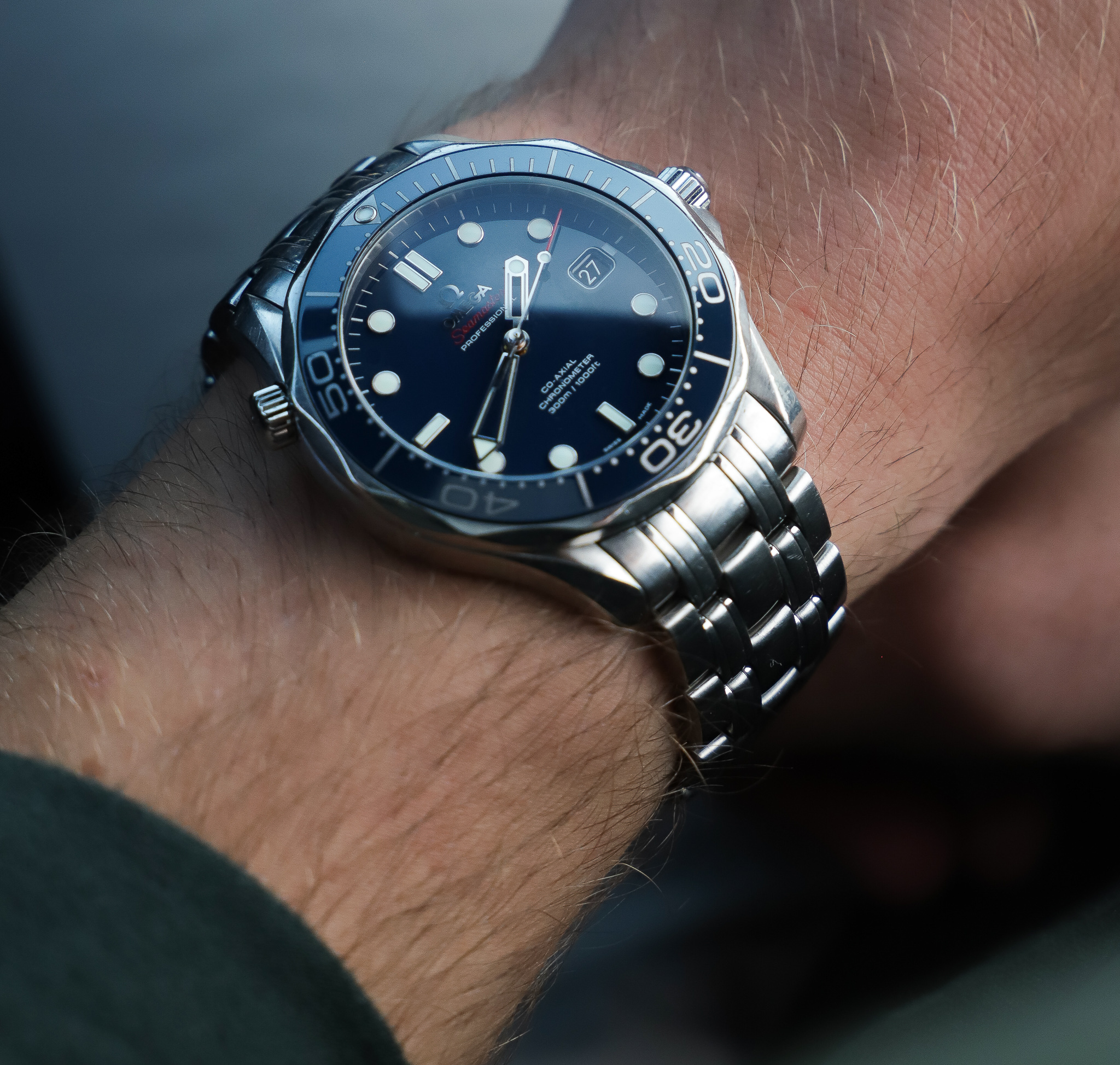
Extremely versatile
In general, dive watches are extremely versatile. This may come as a surprise to some people as
Sure, there are exceptions of ultra-advanced dive watches that have a diameter of 50mm and a thickness that make them impossible to wear with a suit and slide under a cuff. But generally speaking, most dive watches have a size between 39 and 44mm and a design that works surprisingly well for many different occasions.
Originally, dive watches were designed as tools. But as society has become more and more digitalized, the need for traditional watches for professional divers is not as great. Therefore, the purpose of the dive watch has changed in a sense. How we view it has changed and equally so how most people wear it.
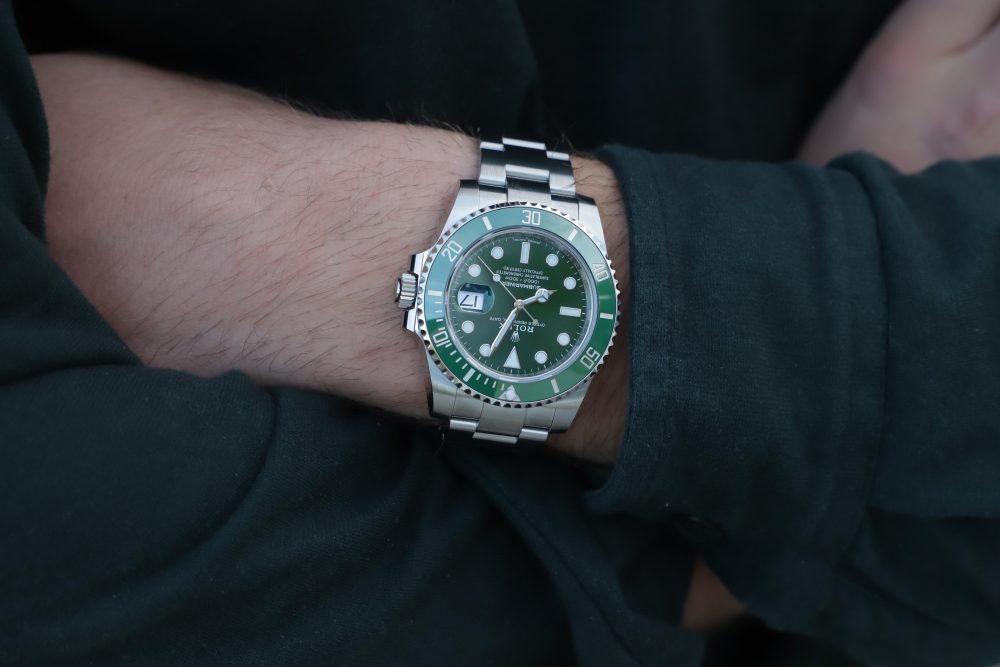
Moreover, the wristwatch has in general become more and more of a fashion and statement object, which is partly as the watch’s importance as a timekeeping partner has decreased – again due to technological advancements, such as the fact that everyone has a phone in their pocket these days.
Therefore, the dive watch, like most other wristwatches, has gone from being a tool used only by professional divers to an appealing type of sports watch that is worn by all sorts of people – from scuba divers to office workers.
You have probably not missed James Bond wearing a dive watch with a suit. He’s worn a Rolex Submariner, Omega Seamaster, and other types of dive watches with a suit and it looks great.
The bottom line is that dive watches are surprisingly versatile. Whilst they are intended as sports watch – and originally as tools – they are surprisingly versatile and works well on most occasions. A dive watch will look just as great with jeans and a t-shirt as a Rolex Submariner will look with a black suit.
This brings us to the next point.
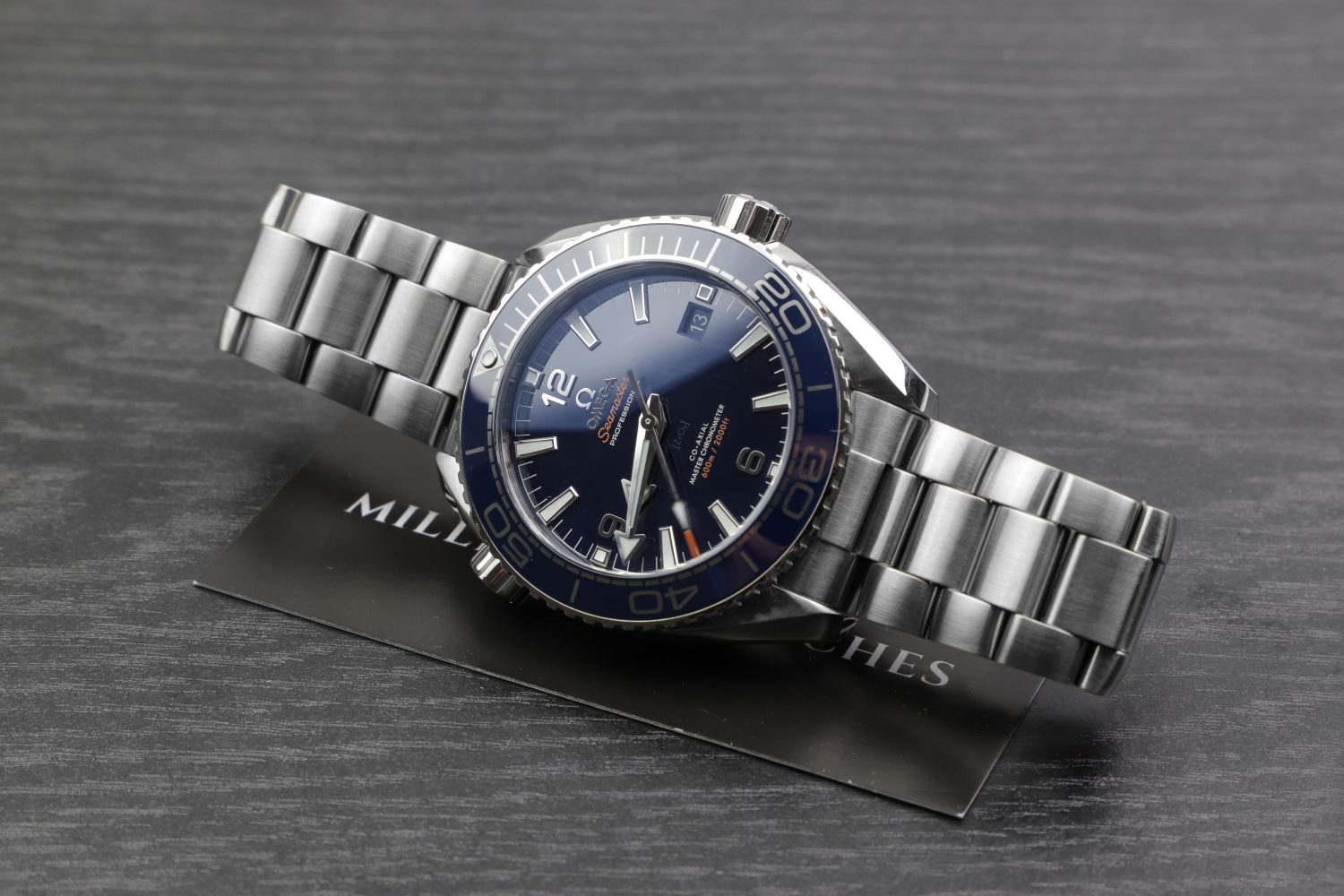
Durable, robust, and reliable
Another aspect that ties into the above point is that dive watches are durable, robust, and reliable. And it is for this reason that they are highly versatile. This means that a dive watch can be worn on virtually any occasion.
If you just have one watch in your collection, you want to make sure that you buy a watch that you can wear on any and all occasions. For example, if you only have a dress watch in your collection, you won’t be able to wear it near the water. You won’t be able to go swimming with it and you’ll have to take it off when you’re going to the beach. If you own a large and bulky chronograph, it probably won’t pair well with formal attire.
But a dive watch – generally speaking – can be worn on any occasion.
You might start your day off in the office with formal attire and then head to the beach. Thanks to the water resistance and durability of a dive watch, you won’t have to worry about bringing it with you. And you won’t have to worry about other situations that life may throw at you as well. Are you going on a hike? Your dive watch will remain a trusted companion. Are you going cycling? Don’t worry, a dive watch is not as sensitive as a dress watch and will probably manage this situation excellently.
With all of this said, it’s very convenient and practical to have a watch that is durable, robust, and reliable as your everyday watch. Whatever life may throw at you and whichever situation you may find yourself in, you can wear your dive can follow you every step of the way without having to worry about it. There are a few types of watches that can handle all kinds of situations. Usually, there’s always compromise in one way or another. For example, whilst a traditional racing chronograph watch can be very versatile in design, they often have poor water resistance and are more sensitive to shocks and bangs. But dive watches tend to tick all the boxes.
There are few watches that can do this so this is a great reason why dive watches are so popular.

Long history
Another thing that explains the rise in popularity of dive watches is their long and interesting history. Humans tend to be appeased by the background and history of things and this is something that the dive watch doesn’t lack.
We’ll go into detail about the background and history of the dive watch further on in this article but let’s discuss it briefly.
The dive watch scene began growing around the 1950s as more and more watch brands became interested in developing watches for this space. It is during this period that some of the most iconic dive watches were first created. And because some of the dive watches that are so iconic have been around for so long certainly proves something about the dive watch design and their timeless nature. For example, in 1953, Blancpain released the Fifty-Fathoms, in 1954, Rolex released the Submariner, in 1948, Omega released the Seamaster.
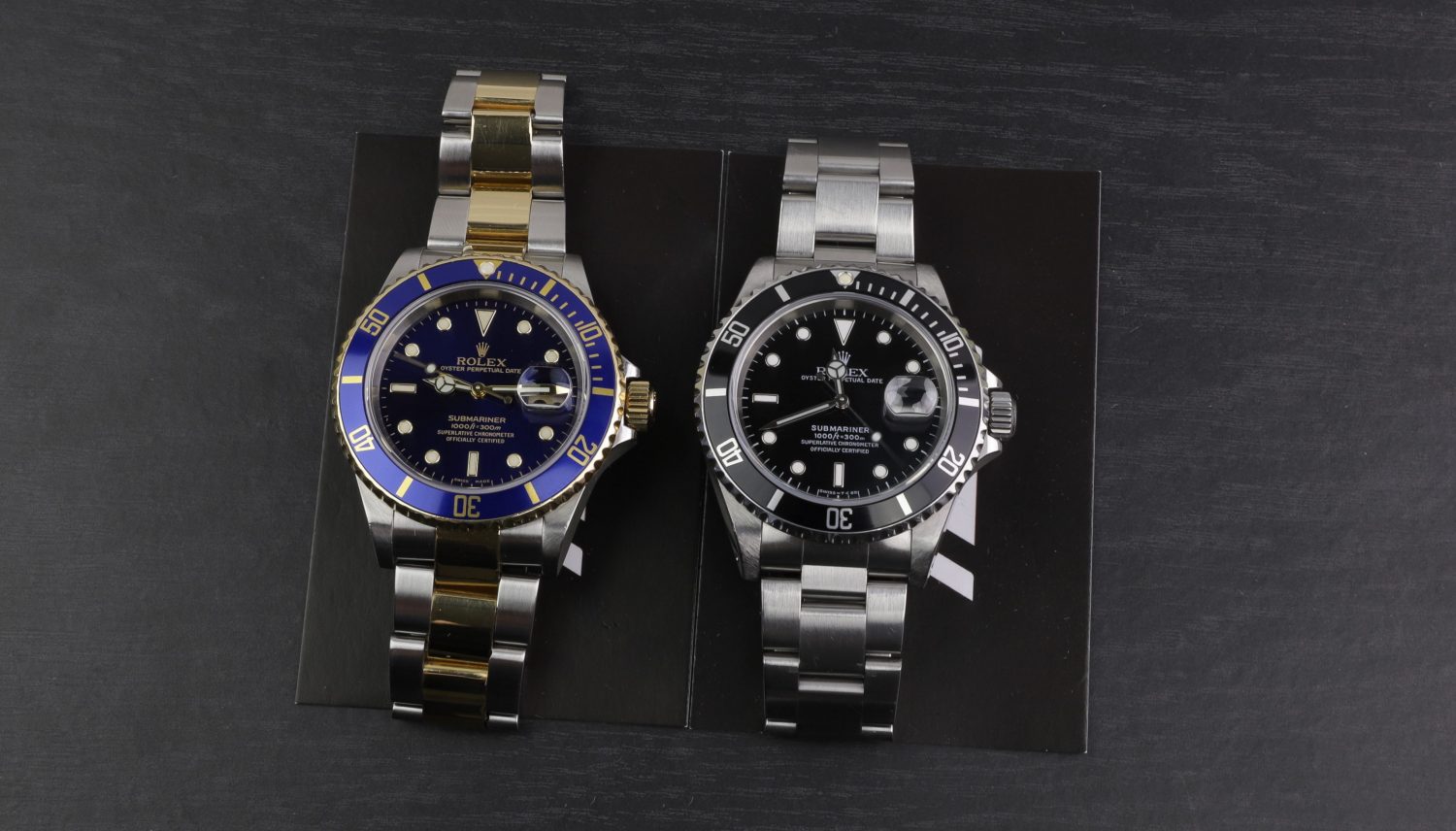
There were some dive watches available prior to this and a lot of research and development was going on decades before the 1950s. But it was around the 1950s that the general public’s eyes were opened to professional diving and when professional divers were well-respected due to the challenging nature of what they were doing. As such, with the growing interest in diving and also an increased focus n underwater explorations – for various reasons – the general interest in dive watches grew. This naturally also led to watch brands seeing a new market and a new demand opening up that they had to meet.
At this time, there were no professional digital tools. The dive watch was the only item that could assist divers during their dive and help them keep track of the time underwater. Over time the purpose of the dive watch evolved and turned into what is essentially a fashion object for the most part today.
This long and rich history of the dive watch certainly contributes to the appeal. Especially if you select a watch that has been around for many decades. And this is also part of the reason why some of the early dive watch models such as those mentioned remain so iconic and popular.

Timeless design
Elaborating on the point above, it’s safe to say that the signature characteristics of dive watches tend to lead to what can be described as timeless designs.
Of course, with the vast selection of dive watches on the market, there are some exceptions so it cannot be said about every single dive watch, but generally speaking.
The most iconic and popular dive watches today have been around for more or less 70 years and in many ways remain very similar to their original design. There are few designs that can stand the test of time for such a long period of time which is more than enough to prove that dive watch designs – generally speaking – are timeless.
Naturally, this further boosts people’s interest in dive watches. It also allows people to see themselves wearing the same watch 10, 20, or even 50 years from now and loving it just as much.

Celebrities and marketing
Like with all things, there’s no denying that celebrities and marketing play important roles in promoting and building interest and popularity.
The same can be said for dive watches.
There are endless examples of this and it is difficult to pinpoint one single event because it is every little bit over time. But it’s safe to say that James Bond with the Rolex Submariner – and later with the Omega Seamaster – played an important role in showing that dive watches are seriously versatile and also seriously cool.
Moreover, it will be difficult to count just how many celebrities have been seen wearing dive watches over the decades.
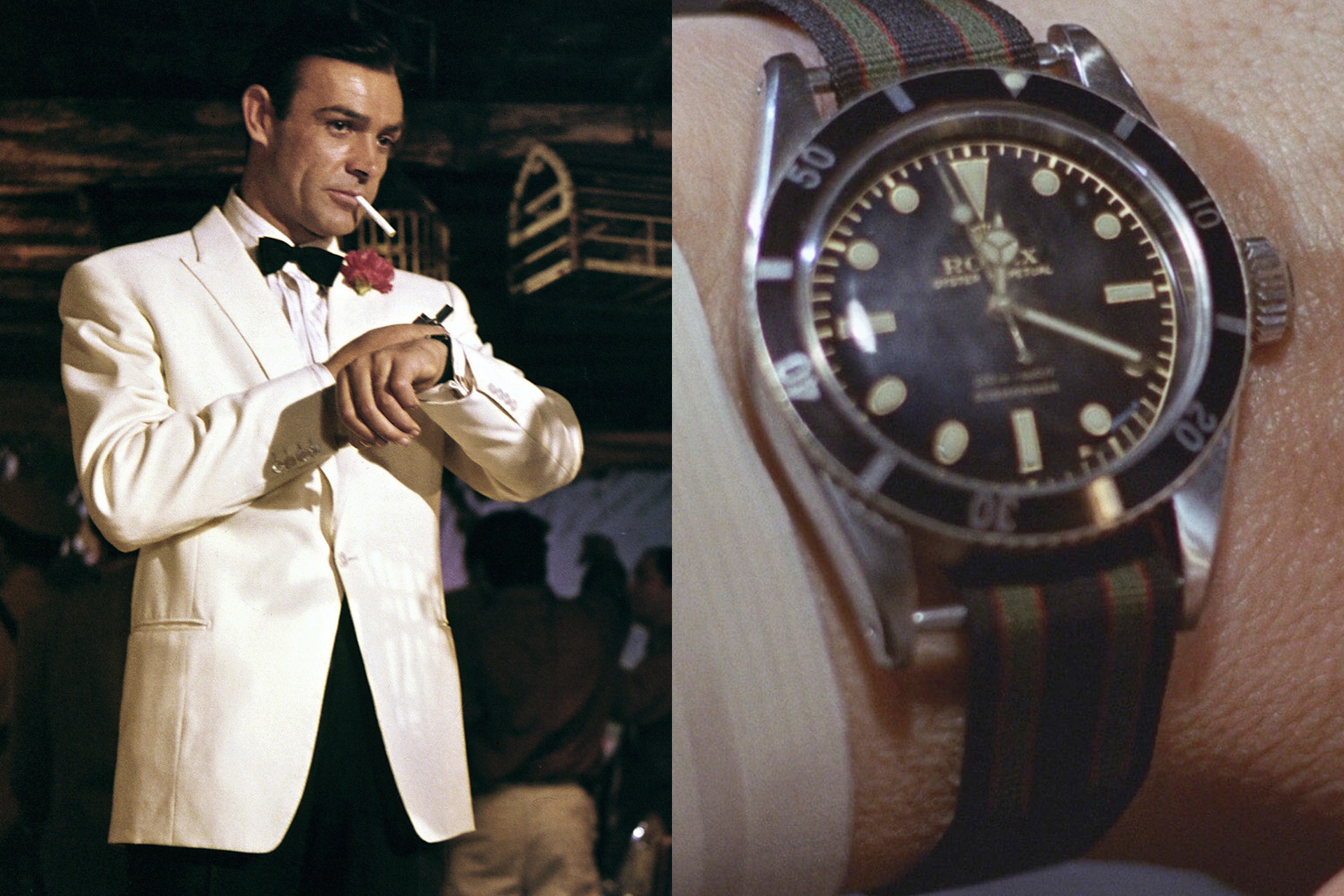
The unidirectional bezel is functional and practical
Since measuring elapsed time is a requirement in a dive watch – and since it has become a distinct design feature, most dive watches have it.
And whilst you perhaps won’t go scuba diving and need to keep track of the elapsed time underwater, there are plenty of other areas where you can find this function useful.
With that said, the dive watch is not just a tool to tell the time, it is also a practical tool to measure elapsed time. Whether you want to quickly and easily measure the elapsed time when cooking eggs or doing something else, there are many situations in your everyday life where you may find the unidirectional rotating bezel of a dive watch practical.
As such, it is not just for professionals but it can also add value for the regular wearer.
Can a dive watch be an everyday watch?
With everything we have discussed above, it’s pretty obvious that the definite answer to this question is yes. In fact, that’s how most people use their dive watches nowadays.
As concluded, dive watches are, generally speaking, extremely versatile in design and can be worn on most occasions. In addition, they are also robust and durable and are able to withstand most situations and harsh environments that you put them through. In our opinion, these are some of the most important characteristics to have in an everyday watch. It should b a watch that is elegant enough to wear with a suit – and we all know how good a dive watch can look with a suit. Just look at James Bond.
Moreover, we also want an everyday watch to be durable enough so that you can wear it without having to worry about taking it off when you find yourself in various situations.
As you know, dive watches were originally but as other, more advanced, diving equipment has come around, they no longer play a critical role to the same extent.

And the truth is that the closest dive watches ever get to the water for most people is the sink. So most people who buy a dive watch today are not professional divers and they don’t have any plans of ever becoming one. They buy a dive watch because they love the design and because it is a versatile and durable option that they can wear through all of life’s events. And to be honest, there are few watches that are as versatile as dive watches. For that reason, the answer is yes, dive watches can be fantastic everyday watches. And they are for a lot of people.
Plus, it’s not only about the water resistance either. Magnetism is a big part of our everyday lives. Everything around us contains magnets. From computers to phones. As you know, magnetism can be detrimental to the accuracy of a watch’s accuracy. And the great thing is that all (true) dive watches offer quite good water resistance.
Moreover, we also have the aspect of shocks and bangs which is another thing that you may subject your watch to throughout your everyday life for various reasons. Whether you are biking, playing golf, or doing something else. As concluded in the list of ISO requirements for a dive watch, they must be able to handle up to 5,000 GS. that is a lot! So with all of this in mind, dive watches tend to be watches that people can rely on, no matter the situation. And if that’s not the recipe for the ultimate everyday watch, I don’t know what is.
History of diving watches
As previously discussed, the dive watch industry began booming in the 1950s when the general public’s interest in scuba diving grew and a lot of people looked up to professional divers.
But the history of dive watches began already several decades before this.
Omega has proudly taken credit for creating the world’s first commercially available divers’ watch which was introduced in 1932 by the name ”the Marine”. This watch used a patented double case sealed with cork to keep water out and allow the watch to function properly.
Obviously, the Omega didn’t meet any of the ISO criteria for a dive watch today and it had virtually none of the functions of a dive watch today, meaning a unidirectional rotating bezel or a water resistance of at least 100 meters, but it was a starting point.
Another reason why the 1950s is considered the most important era for the beginning of dive watches is also the fact that this was when the design of the dive watch as we know was developed. The most critical component was of course the unidirectional rotating bezel and this first started appearing in the late 1940s and early 1950s.
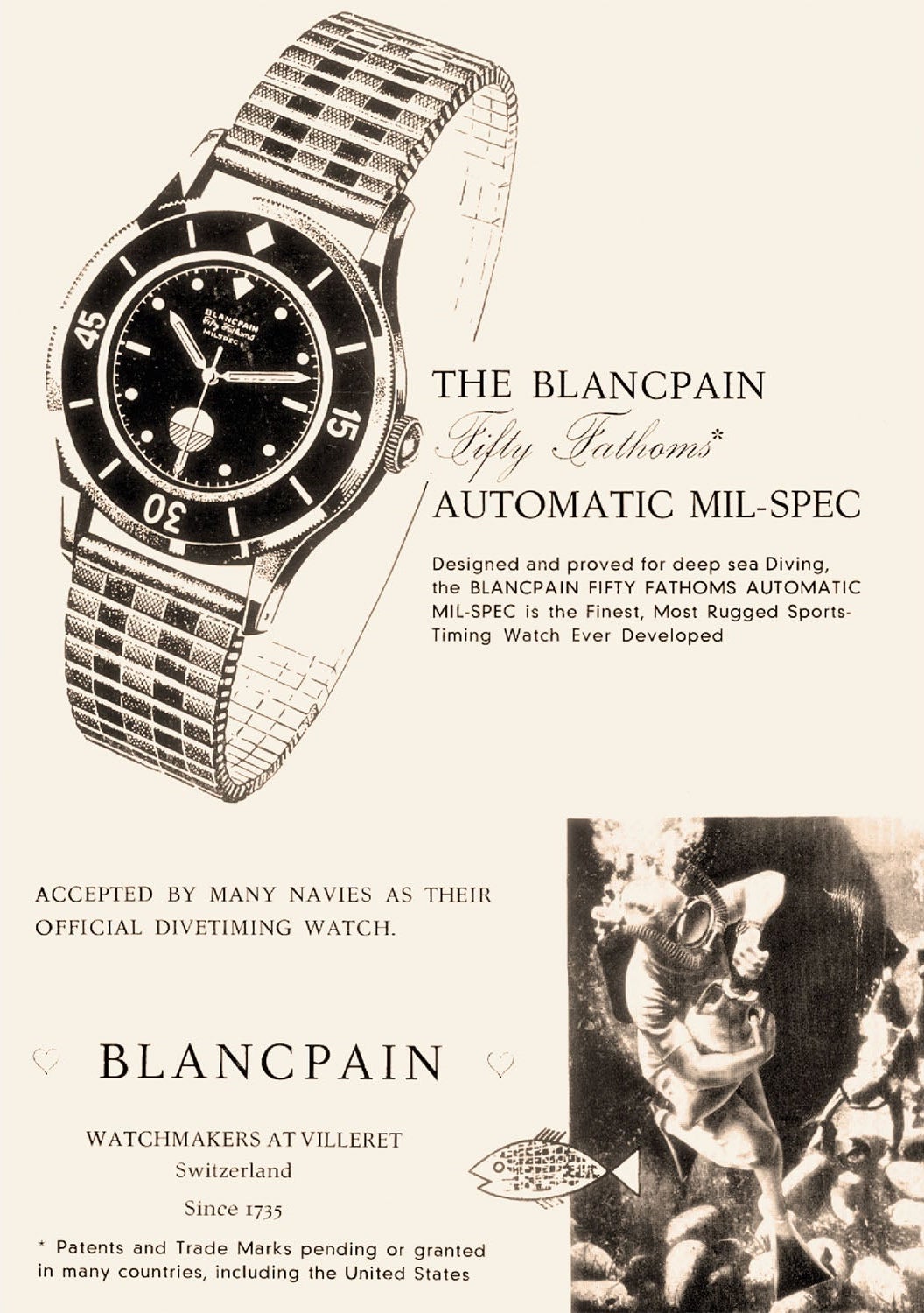
Long before the birth of the first wristwatches, many manufacturers started developing and experimenting around making wristwatches waterproof. As water and mechanical movements are not a good combination, it’s hardly a surprise that watch manufacturers began looking at ways to keep water out from a watch case. But bear in mind that this was long before scuba diving and other types of professional diving were a big thing. And before there was a need for professional dive watches.
One of the most notable events in the history of waterproof watches is of course the introduction of the Rolex Oyster in 1926. This watch became the first waterproof watch. The hermetically sealed case used in the Rolex Oyster is a case construction that Rolex still uses to this day – and one that many other brands have taken inspiration.
It would take until 1996 when the ISO 6425 standard was finally introduced to help define precisely what a dive watch was – and what it wasn’t. The official definition used to describe a dive watch is ”designed to withstand diving in water at depths of at least 100m and possessing a system to control the time.”
As the popularity of diving as a sport soared in the 1950s, the need for diving-specific tools emerged. Enter the dive watch. And as mentioned earlier, it was during the 1950s and the 1960s that some of the most popular dive watches today were first launched.
Over the decades and up until now, a lot has happened. Dive watches have become more robust, and more durable, and most importantly, the bar for water resistance has been raised over and over.
The latest and most notable event was in 2022 when Rolex released a watch with the greatest depth rating ever created. The Deepsea Challenge reference 16067 measures 50mm in diameter and has a water resistance of 11,000 meters (36,090 feet). And bear in mind, the watch has been tested to 125% of the specified water resistance according to ISO standards so it’s even more capable than what the depth rating suggests.




